If you’re wrestling with hard water, trust me, a Marlo water softener is a game-changer. I’ve lived with chalky faucets, dry skin, and appliances that seemed to age faster than me—until I got my Marlo. It’s not just about softer water; it’s about a better quality of life at home.
From smoother laundry to happier pipes, this system delivers. In this article, I’ll share my experience, break down the pros and not-so-great parts, compare it to other brands, and give you maintenance tips to keep it running smoothly.
You’ll see why I’m sold on Marlo.
My Journey With The Marlo Water Softener
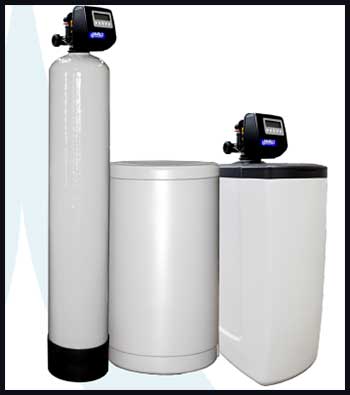
Picture this: I move into a new house, excited for a fresh start, only to find my showers leave my skin feeling like sandpaper and my coffee tastes like it’s been brewed with regret.
Hard water was the culprit, and it was wreaking havoc.
My dishwasher looked like it was auditioning for a role as a stalactite cave, and my laundry felt like it had been starched by a vengeful dry cleaner.
I knew I needed a water softener, but the options were overwhelming.
After researching, I landed on the Marlo CMP Series, specifically the CMP45K, and let me tell you, it’s been a revelation.
Installing the Marlo was straightforward, thanks to its pre-assembled design. I’m no plumber, but with the help of a local pro, it was up and running in a day. The first thing I noticed was the water’s feel—silky, almost luxurious.
My shampoo lathered like I was in a commercial, and my skin stopped screaming for lotion post-shower. Dishes came out of the dishwasher spotless, and my water heater seemed to sigh in relief.
The CMP45K’s 45,672-grain capacity and 17 GPM flow rate handled my household of four with ease, even during laundry marathons. Over months of use, I’ve seen my appliances work more efficiently, and my water bill hasn’t spiked, which I was worried about.
What stood out was the system’s smart design. The lockout feature on the control panel meant my curious kids couldn’t mess with the settings, and the digital display made it easy to monitor.
I chose Marlo because of its reputation for durability, and so far, it’s lived up to the hype. It’s not perfect—more on that later—but my experience has been overwhelmingly positive. If you’re on the fence about hard water solutions, I’m here to tell you why Marlo might just be your answer.
The Pros of Owning A Marlo Water Softener
- Exceptional Water Quality
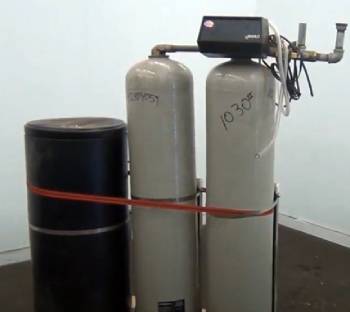
The first thing you’ll notice with a Marlo is how it transforms your water.
Hard water’s culprits—calcium and magnesium—get swapped out for sodium or potassium ions through an ion exchange process that’s practically magic.
My tap water went from gritty to smooth, making everything from drinking to bathing feel better.
Coffee tastes richer, and I’ve even noticed my hair’s shinier. Marlo’s advanced resin technology ensures consistent results, and I’ve yet to find a streak on my glassware since installation.
- Durability That Impresses
Marlo’s been in the game since 1973, and their systems are built to last. My CMP45K feels like it could survive a zombie apocalypse. With proper care, these units can easily hit the 10-15 year mark, and some users report even longer lifespans.
The fiberglass-reinforced tanks and sturdy PVC piping scream quality. I’ve had mine for over a year, and it’s still running like it was installed yesterday. For a family like mine, that reliability is worth its weight in gold.
- Tailored Options for Every Home
Marlo doesn’t believe in one-size-fits-all. Their CMP, MCV, and CTC series cater to different household sizes and water demands. My CMP45K is perfect for my medium-sized home, but if you’ve got a mansion or a tiny apartment, Marlo’s got you covered with models ranging from 15,000 to over 1,000,000 grains in capacity.
Whether you’re on city water or a well, there’s a system that fits. This flexibility means you’re not stuck with a unit that’s overkill or underpowered.
- Efficient Operation
I was worried a water softener would jack up my water and electric bills, but Marlo’s systems are designed to sip resources. The CMP45K’s metered regeneration only kicks in when needed, based on your actual water use.
I’ve noticed it regenerates about once a week, using around 15 pounds of salt each time. That efficiency keeps costs down and minimizes wastewater. Plus, the 17 GPM flow rate means I can run the shower, dishwasher, and laundry without losing pressure.
- Easy Installation and User-Friendly Design
Setting up the Marlo was less painful than I expected. It came fully assembled, and the clear manual made the process smooth, even for a DIY skeptic like me. The digital display is intuitive, showing error codes if something’s off, and the lockout feature keeps settings safe from meddling hands.
If you’re not handy, a plumber can handle it in a few hours. Once it’s running, you barely notice it’s there—until you feel the soft water, that is.
The Not-So-Good Parts of Marlo Water Softeners
- Upfront Cost Can Sting
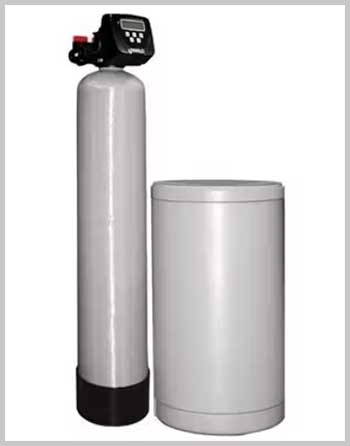
Let’s talk money. A Marlo water softener isn’t cheap.
My CMP45K set me back about $1,200, including installation, which is a chunk of change.
Compared to budget brands, it’s pricier, and if you’re on a tight budget, that initial hit can feel daunting.
While I think the quality justifies the cost, it’s something you’ll need to plan for.
Financing options or local rebates might help, but it’s still a significant investment upfront.
- Salt-Based System Concerns
Marlo’s softeners rely on salt for ion exchange, which works great but isn’t for everyone. If you’re on a low-sodium diet, the slight increase in sodium in your water might be a concern—though it’s minimal for most people. I also worry about the environmental impact of salty wastewater.
Some areas have strict regulations on this, and if you’re eco-conscious, you might prefer a salt-free alternative. For me, the benefits outweigh this, but it’s worth considering.
- Space Requirements
My basement has plenty of room, but Marlo’s units, especially the larger ones, need space. The CMP45K’s footprint is about 15 inches wide by 43 inches tall, which could be tricky in a cramped apartment or utility closet.
If you’re tight on space, you’ll need to measure carefully or consider a compact model like the MCV series. I didn’t have an issue, but I can see this being a hurdle for some.
- Maintenance Commitment
While not overly demanding, Marlo softeners require regular upkeep. You’ll need to refill the brine tank with salt every few weeks and clean it annually to prevent buildup. I forgot to check the salt level once, and the system’s performance dipped noticeably.
If you’re not into routine maintenance, this could feel like a chore. It’s not rocket science, but it’s not a set-it-and-forget-it system either.
Maintenance Tips To Keep Your Marlo Running Smoothly
- Keep the Brine Tank Stocked
Your Marlo needs salt to work its magic, so don’t let the brine tank run dry. I keep mine at least a quarter full with high-purity salt pellets—sodium chloride or potassium chloride work best.
Marlo recommends pellets over crystals to avoid salt bridges, where a crust forms and blocks water from reaching the salt. I check the tank every couple of weeks, adding two 40-pound bags as needed. Keep the salt level a few inches above the water to ensure smooth regeneration.
- Clean the Brine Tank Annually
Once a year, I give the brine tank a good scrub. Empty the salt into a clean bucket, then wash the tank with mild dish soap and warm water. Rinse thoroughly, and for extra sanitation, I add a quarter cup of bleach mixed with water, let it sit for 15 minutes, then rinse again.
This prevents sludge or salt bridges, which can mess with performance. It takes about 30 minutes, but it keeps the system humming.
- Test Water Hardness Regularly
To make sure your Marlo’s doing its job, test your water’s hardness every few months. I picked up a test kit from a local hardware store for about $10. Run a faucet for three minutes, then collect a sample.
A properly working softener should show less than 1 grain per gallon (GPG) or 17.1 ppm. If it’s higher, you might need to tweak settings or check for issues like a salt bridge. My tests have consistently shown soft water, which gives me peace of mind.
- Address Iron Buildup
If your water has high iron levels, like mine did initially, run a product like Iron Out through the system monthly. You can also install a Resup Feeder for automatic cleaning. I noticed my resin tank was gunking up early on, so I started this routine, and it’s kept things clean.
Check with your installer to confirm iron levels, as too much can damage the resin over time.
- Inspect During Regeneration
The regeneration cycle, which takes about four hours, is when your Marlo refreshes its resin beads. I manually trigger a cycle every few months to ensure it’s running through all stages properly. Listen for odd noises or continuous water flow to the drain, which could indicate a valve issue.
My system’s been solid, but catching problems early saves headaches. If you notice anything off, call a local dealer for a quick fix.
Comparing Marlo To Other Brands
I’ve been using my Marlo CMP45K for over a year, and it’s transformed my home’s water. But how does it compare to other big names like Clack, ScaleBlaster, and Northstar?
I dug into their features, talked to other users, and here’s what I found, breaking it down head-to-head to help you decide what’s best for your home.
- Marlo Vs. Clack Water Softener
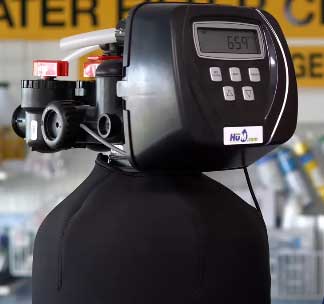
Clack’s WS1 series, like the WS1.5 with a 48,000-grain capacity, is a strong contender and about $150 cheaper than my Marlo CMP45K.
Its valve is a workhorse, known for reliability, and the digital control makes programming a breeze, much like Marlo’s.
Clack’s systems are also made in the USA, with a focus on commercial-grade components.
However, Clack’s tanks feel less robust compared to Marlo’s fiberglass-reinforced ones, and I’ve heard some users complain about trickier maintenance due to proprietary parts.
Marlo’s lockout feature for settings is a big plus for me, especially with kids around, and its 17 GPM flow rate beats Clack’s 15 GPM, ensuring better performance in my busy household.
If you’re after a budget-friendly, reliable option, Clack’s great, but Marlo’s durability and user-friendly design edge it out for me.
- Marlo Vs. ScaleBlaster Water Softener
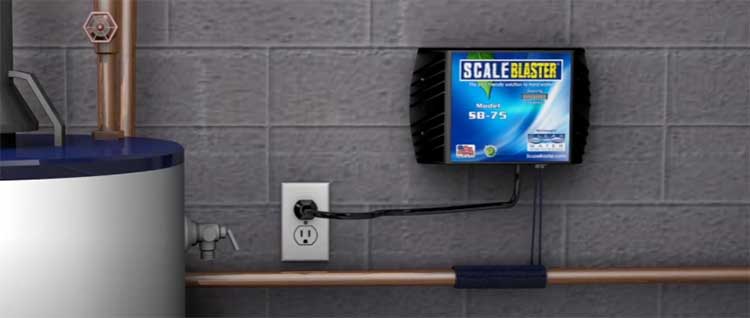
ScaleBlaster takes a completely different approach with its salt-free, electronic descaling technology. It’s compact, maintenance-free, and costs around $700, making it appealing if you’re eco-conscious or in a region with salt-based softener restrictions.
Unlike Marlo’s ion exchange, ScaleBlaster doesn’t remove hardness minerals but prevents scale buildup by altering their structure. I tested my water (12-18 GPG), and while ScaleBlaster reduced scaling on my faucets, it didn’t deliver the silky water feel Marlo gives me. For drinking, bathing, and appliance protection, Marlo’s true softening wins.
ScaleBlaster’s a good pick for small homes or if you want zero upkeep, but for comprehensive softening, Marlo’s my choice.
- Marlo Vs. Northstar Water Softener
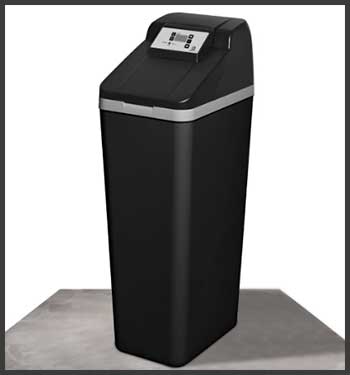
Northstar’s NST series, like the NST45UD1 with a 45,000-grain capacity, is a close match to my Marlo CMP45K, priced around $1,100.
It’s got a solid reputation for efficiency, with a metered valve that regenerates based on usage, similar to Marlo.
Northstar’s compact design is a plus for tight spaces—its footprint is slightly smaller at 13 inches wide versus Marlo’s 15.
However, Northstar’s flow rate tops out at 14 GPM, which struggled during my household’s peak water use compared to Marlo’s 17 GPM.
I also found Marlo’s digital display more intuitive than Northstar’s, and its build quality feels a tad sturdier. Northstar’s a great value for smaller homes, but Marlo’s performance and versatility make it better for my needs.
Marlo holds its own against Clack’s reliability, ScaleBlaster’s eco-friendly approach, and Northstar’s compact efficiency. Its balance of durability, high flow rate, and tailored options makes it a standout for my medium-sized home with hard water issues.
Frequently Asked Questions (FAQ)
Marlo water softeners are proudly made in the USA, specifically in Racine, Wisconsin. The company’s been crafting water treatment solutions there since 1973, leveraging decades of expertise. I love knowing my system was built locally with high-quality standards, and it gives me confidence in its reliability.
Marlo softeners use an ion exchange process. Hard water flows through a resin tank, where calcium and magnesium ions are swapped for sodium or potassium ions. This removes hardness minerals, leaving soft water for your home. The system periodically regenerates, flushing out trapped minerals with a brine solution from the salt tank. My CMP45K does this automatically, ensuring consistent performance.
Most water softeners, including Marlo’s, last 10-15 years with proper maintenance. I’ve heard of some Marlo units going strong for 20 years when well-cared-for. Regular salt refills, annual cleanings, and addressing issues like iron buildup are key to maximizing lifespan. My system’s still young, but its build quality suggests it’ll go the distance.
Some states, like California, Texas, and Arizona, have restrictions on salt-based water softeners due to environmental concerns about salty wastewater. These aren’t outright bans but often involve local regulations requiring high-efficiency systems or brine discharge limits. Check with your local water authority to confirm rules in your area. I’m lucky my state allows Marlo’s system without hassle.
Why You Should Get A Marlo Water Softener?
After living with my Marlo CMP45K, I can’t imagine going back to hard water. It’s transformed my home—smoother skin, cleaner dishes, and appliances that actually last. Sure, it’s an investment, and the maintenance takes a bit of effort, but the payoff is worth it.
Compared to other brands, Marlo’s durability, efficiency, and tailored options make it a standout. If you’re tired of hard water’s toll on your home and want a reliable solution, Marlo’s the way to go.
Trust me, you’ll feel the difference every day.
